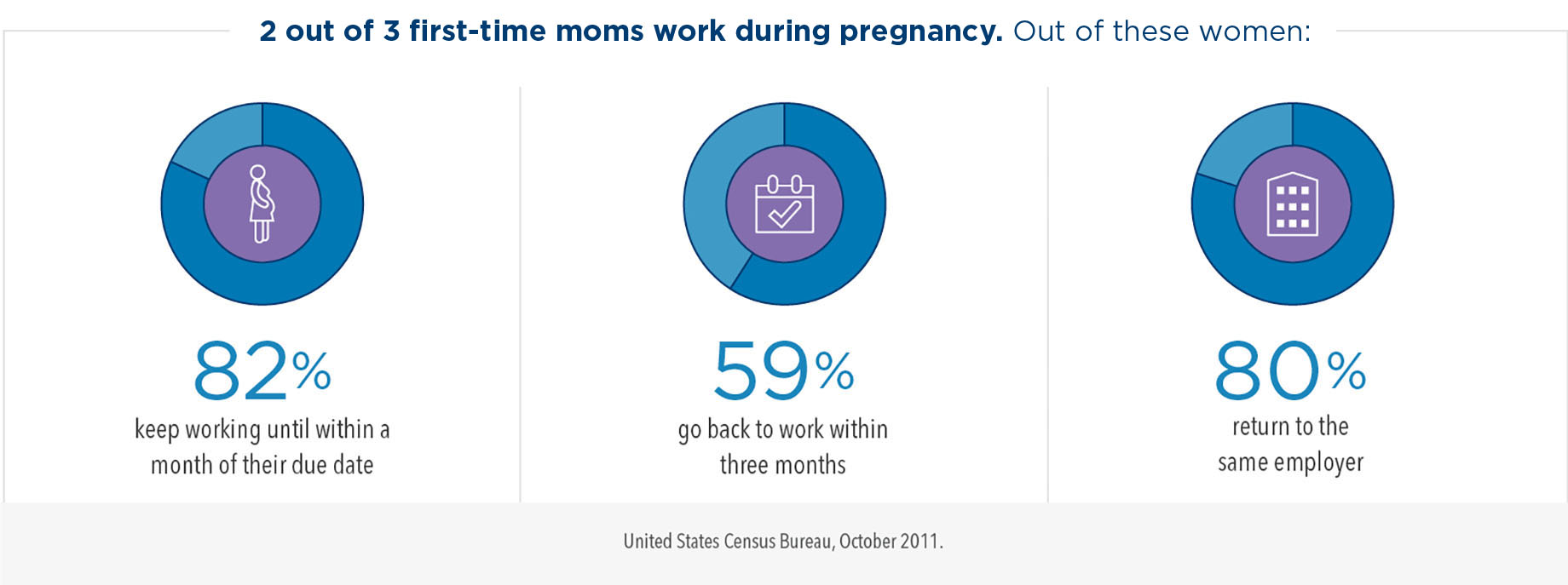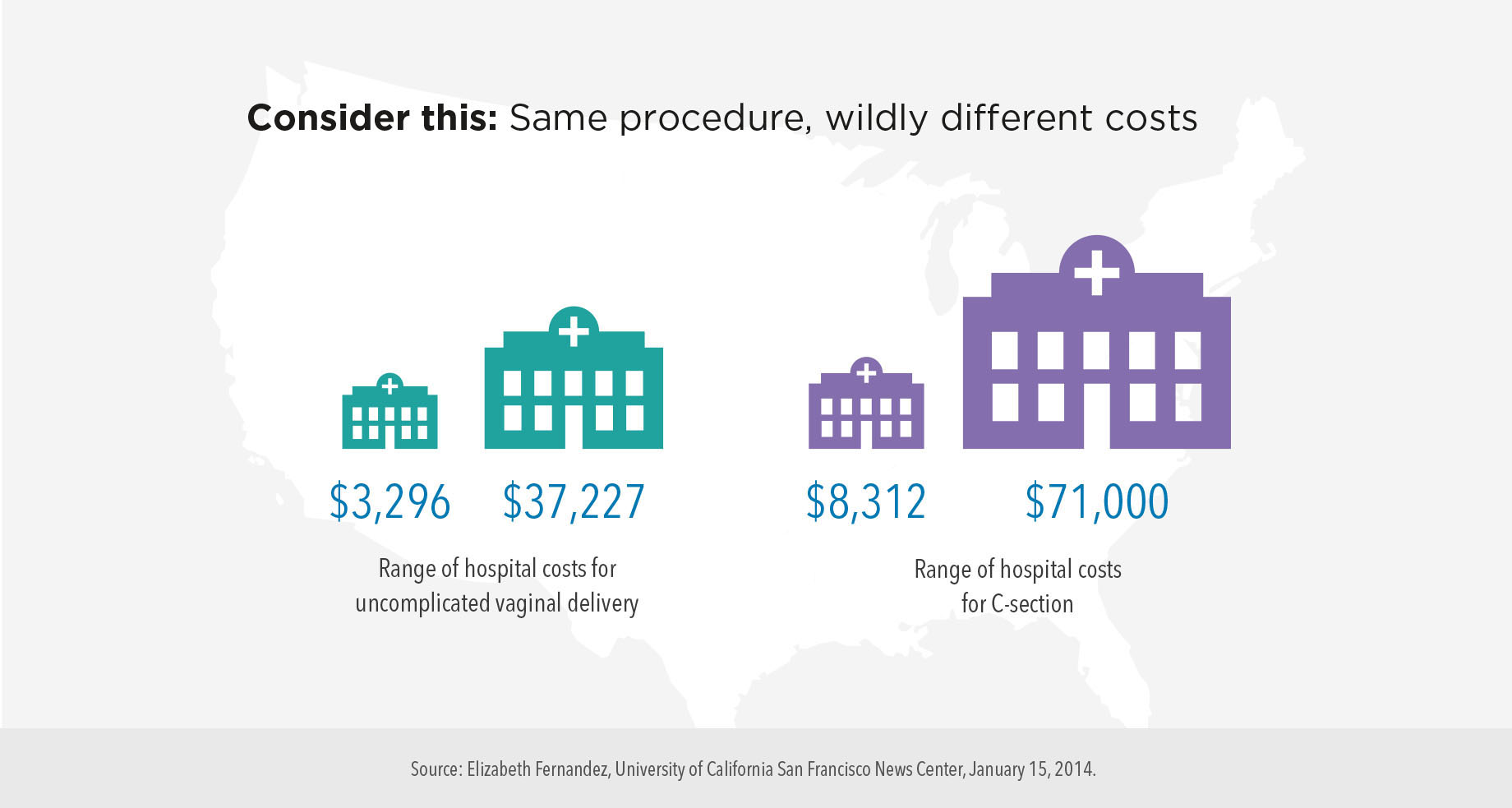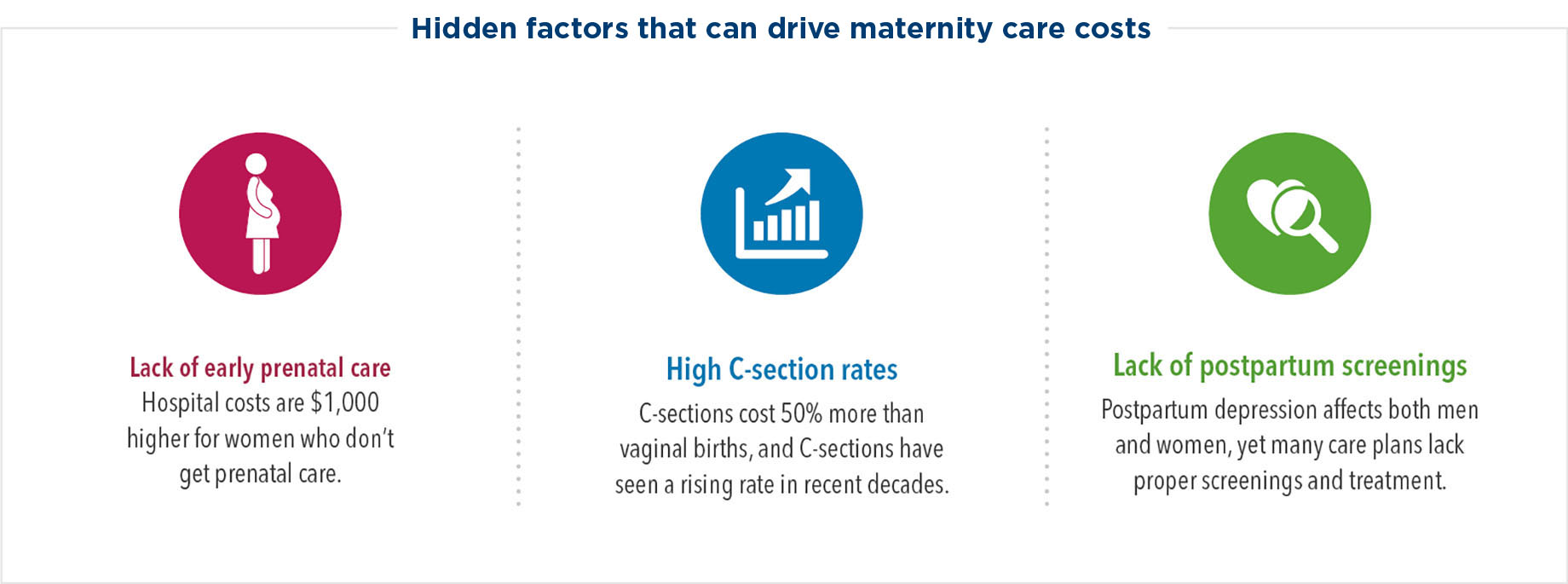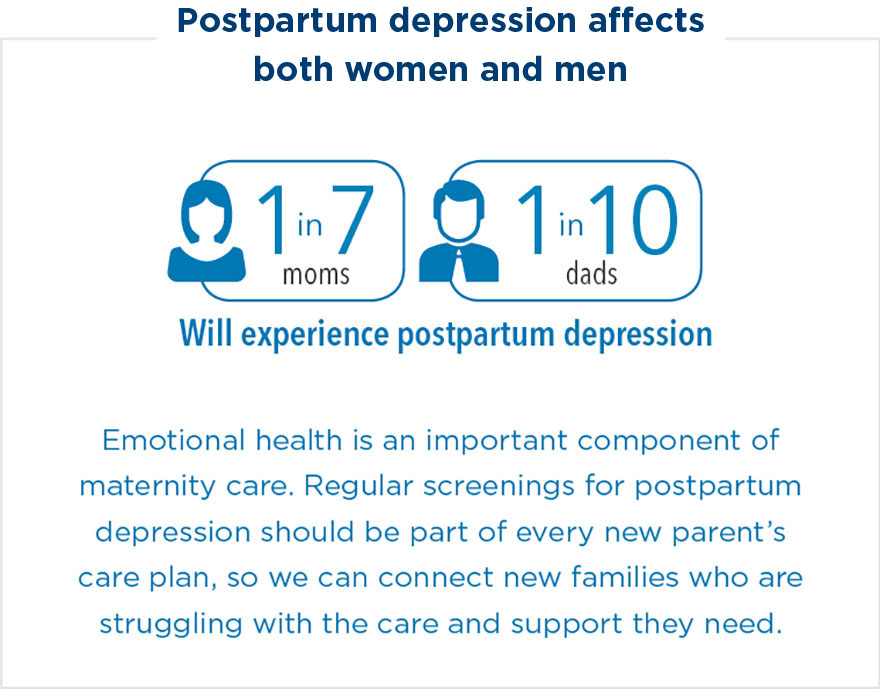Health care services for new mothers and children — from labor and delivery to childhood immunizations — account for $1 out of every $5 that large employers spend on health care.¹ And with most women working until late in a pregnancy and returning soon after giving birth, much of their prenatal and postpartum time is spent in the workplace. That’s why high-quality maternity care not only keeps your employees at their best — it helps you get the most out of your health care investment.
Uncovering the unpredictable costs of maternity care


Why are maternity care costs so unpredictable?
Overall, maternity claims are one of the most common and expensive health care costs for businesses.² But on top of medical costs, there are indirect costs to consider — like unexpected time away from work and short- and long-term disability — that can come up during or after pregnancy. Then there’s the unpredictability of costs. According to Business Insider, the average cost to have a baby in the U.S. is $30,000 when factoring in care provided before and after pregnancy.³ But when complications arise — such as pre-eclampsia or a premature birth — costs can quickly spiral into the hundreds of thousands of dollars.⁴


Understanding the major factors impacting cost
1. Early prenatal care
Women who receive early, comprehensive, and continuous prenatal care and preventive screenings are more likely to have healthy pregnancies. They also incur $1,000 less in hospital costs than women who don’t get prenatal care. Prenatal care is instrumental in managing complications. This is important because maternal hospital stays for women with complicating conditions cost about 3 times as much as those for women without complications.6
2. C-section rates
Cesarean births are abdominal surgeries — they increase recovery time, extend hospital stays, and cost approximately 50% more than vaginal births.7 Since all surgeries carry risks, the least invasive option is preferred — but there has been a significant increase in C-section deliveries over the past few decades.
Taking steps to lower C-section rates has become an important global health initiative. Researchers at Harvard Medical School and the Stanford University School of Medicine estimate that the ideal rate for births by C-section is around 19% — but the U.S. national average is still 32%.8,9
3. Postpartum depression screenings and treatment
Maternity care also remains important after babies are born. Postpartum depression is a serious problem that affects 1 in 7 new mothers.10 It can begin shortly before or any time
after childbirth and affect every aspect of a woman’s life — including her ability to be present and engaged at work. Without treatment, postpartum depression can last for months, even years. It can also have compounding effects on other health issues. And new moms aren’t the only ones who can suffer from postpartum depression. Studies show that 1 in 10 men experiences paternal postpartum depression (PPPD), and that the incidence of PPPD is relatively higher in the 3 to 6 months after birth.11

The benefits go beyond cost savings
The more that businesses understand the unpredictable costs of maternity care — and the factors driving those costs — the more they can serve as advocates for their employees during such an important life event. Ultimately, quality maternity care translates to business benefits beyond just savings on health care costs.12 Your employees feel valued when they receive quality care, and your business will benefit from increased engagement, lower turnover, and a healthier, happier workforce.
About our expert

Kari Carlson, MD, is a doctor of obstetrics-gynecology at Kaiser Permanente Redwood City Medical Center. She joined Kaiser Permanente in September 2003. Dr. Carlson has an undergraduate degree in American history from Princeton University and attended medical school at the University of California, Davis. She completed her residency at Kaiser Permanente in Santa Clara.
Resources you may find helpful



- 1
PricewaterhouseCoopers LLP, “Actuarial Analysis of the National Business Group on Health’s Maternal and Child Health Plan Benefit Model,” August 2007, businessgrouphealth.org/pub/?id=f2ffff14-2354-d714-51f4-86f969e42856.
- 2
Sam Stearns and Molly Grimes, “5 Ways Employers Can Optimize the Value of Maternity Care for Employees,” EBN: Employee Benefit News, April 11, 2016, benefitnews.com/opinion/5-ways-employers-can-optimize-the-value-of-maternity-care-for-employees.
- 3
Hillary Hoffower, “How Much It Costs to Have a Baby in Every State, Whether You Have Health Insurance or Don’t,” Business Insider, July 9, 2018, businessinsider.com/how-much-does-it-cost-to-have-a-baby-2018-4.
- 4
Jessica Glenza, “Why Does It Cost $32,093 Just to Give Birth in America?” The Guardian, January 16, 2018, theguardian.com/usnews/2018/jan/16/why-does-it-cost-32093-just-to-give-birth-in-america.
- 5
Elizabeth Fernandez, “How Much Does It Cost to Have a Baby in a Hospital?” University of California San Francisco News Center, January 15, 2014, ucsf.edu/news/2014/01/111071/how-much-does-it-cost-have-baby-hospital.
- 6
Jesse Migneault, “Population Health Approach to Prenatal Care Cuts Payer Costs,” Health Payer Intelligence, April 26, 2017, healthpayerintelligence.com/news/population-health-approach-to-prenatal-care-cuts-payer-costs.
- 7
The Cost of Having a Baby in the United States, Truven Health Analytics, January 2013, transform.childbirthconnection.org/wp-content/uploads/2013/01/Cost-of-Having-a-Baby-Executive-Summary.pdf.
- 8
Hope Ricciotti, MD, “C-section Rates: Consider This When Deciding Where to Have Your Baby,” Harvard Health Blog, January 8, 2016, health.harvard.edu/blog/c-section-rates-consider-this-when-deciding-where-to-have-your-baby-201601088923.
- 9
Joyce A. Martin et al., “Births: Final Data for 2015,” National Vital Statistics Reports, January 5, 2017, cdc.gov/nchs/data/nvsr/nvsr66/nvsr66_01.pdf.
- 10
Depression During Pregnancy and Postpartum, Postpartum Support International, postpartum.net/learn-more/depression-duringpregnancy- postpartum/.
- 11
Margaret Jaworski, “Oh Baby: Postpartum Depression in Men Is Real, Science Says,” Psycom, July 20, 2018, psycom.net/postpartumdepression-in-men.
- 12
PricewaterhouseCoopers LLP, “Investing in Maternal and Child Health: A Business Imperative,” 2010, businessgrouphealth.org/pub/?id=f2ffff14-2354-d714-51f4-86f969e42856.
Kaiser Permanente health plans around the country: Kaiser Foundation Health Plan, Inc., in Northern and Southern California and Hawaii • Kaiser Foundation Health Plan of Colorado • Kaiser Foundation Health Plan of Georgia, Inc., Nine Piedmont Center, 3495 Piedmont Road NE, Atlanta, GA 30305 • Kaiser Foundation Health Plan of the Mid-Atlantic States, Inc., in Maryland, Virginia, and Washington, D.C., 2101 E. Jefferson St., Rockville, MD 20852 • Kaiser Foundation Health Plan of the Northwest, 500 NE Multnomah St., Suite 100, Portland, OR 97232 • Kaiser Foundation Health Plan of Washington or Kaiser Foundation Health Plan of Washington Options, Inc., 1300 SW 27th St., Renton, WA 98057
Congratulations! You have successfully saved this item.
To access your Saved items any time, open the "Saved Items" folder in the top right corner of the page.
It seems that you do not have cookies enabled. Please enable cookies to make use of all of our site's functionality.
You haven't collected any items yet.
- Save Content
Click the "Save" icon next to the content you want to revisit later.
- Access Your Saved Items
Click on the "Saved Items" link at the top of the page or use the URL we create for you.
Be sure to copy and paste the URL we create for you before you leave the site.
1-5 of 14
Your Link
After leave the site, your saved items will be saved for you at this URL:
https://business.preview.dpaprod.kpwpce.kp-aws-cloud.org/saved-items?user=Share your list
Show Disclaimer +


